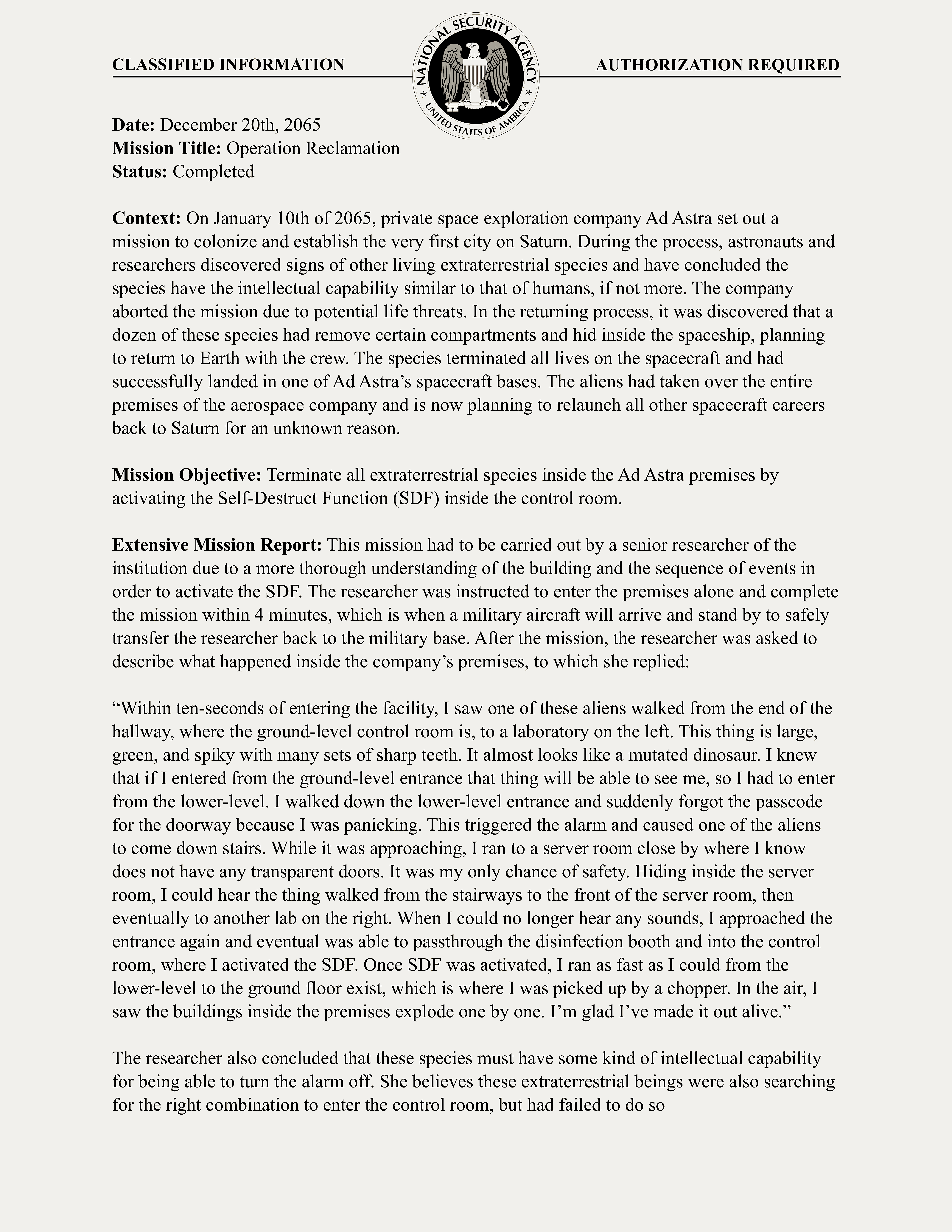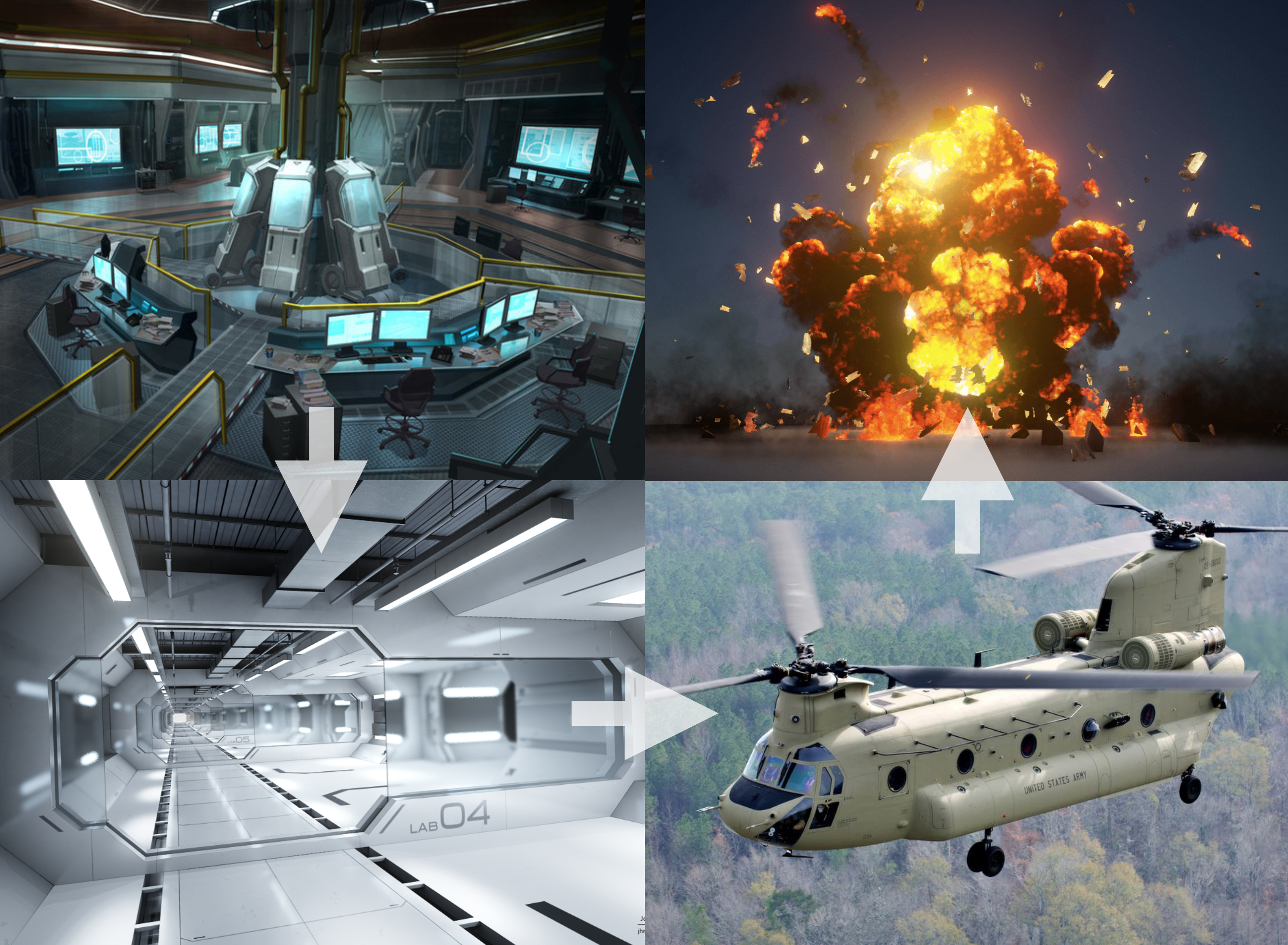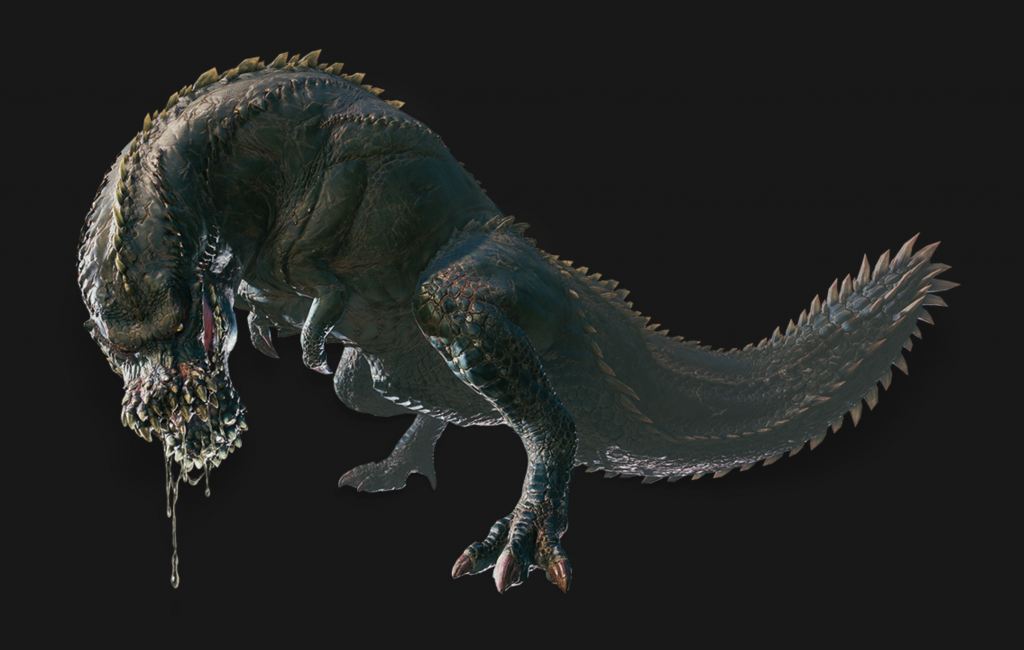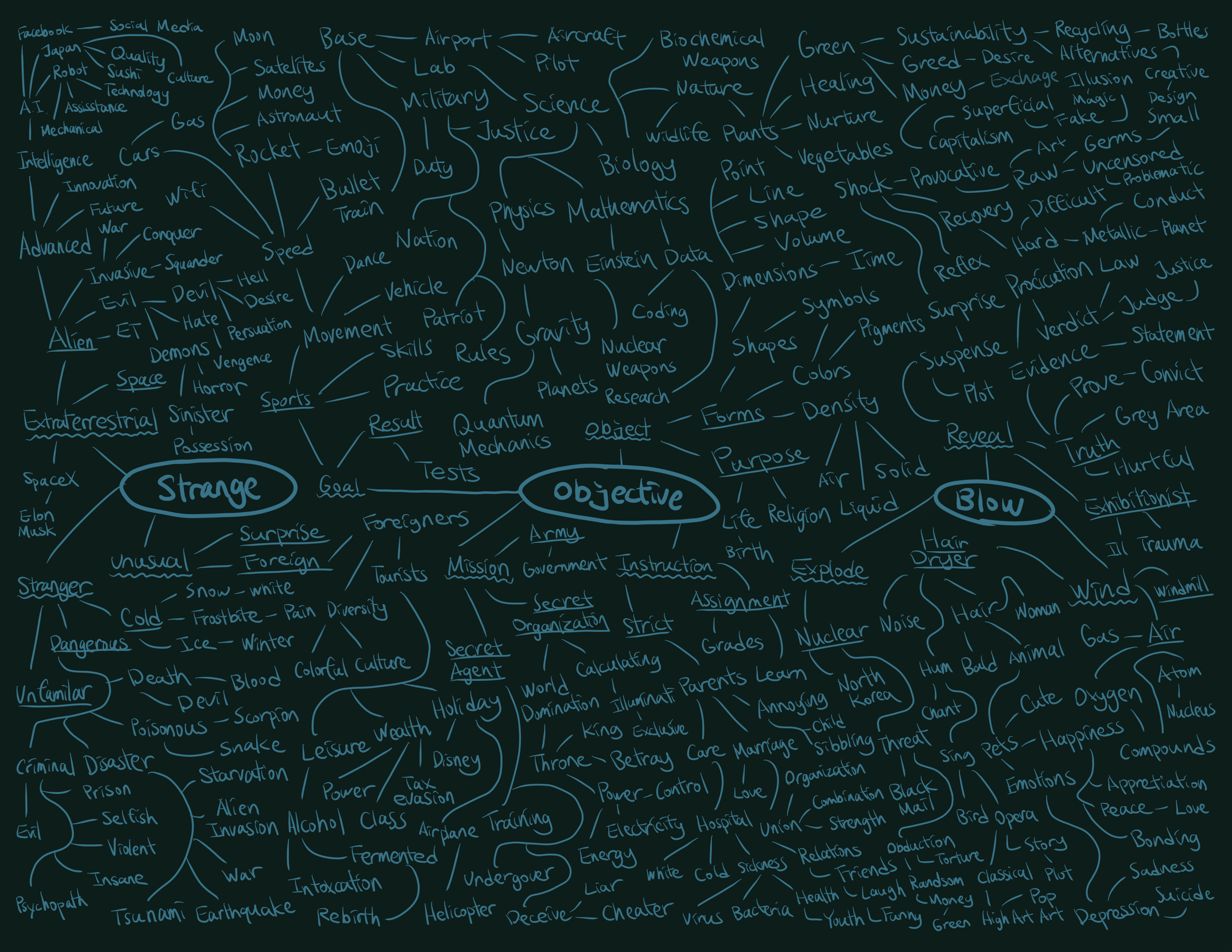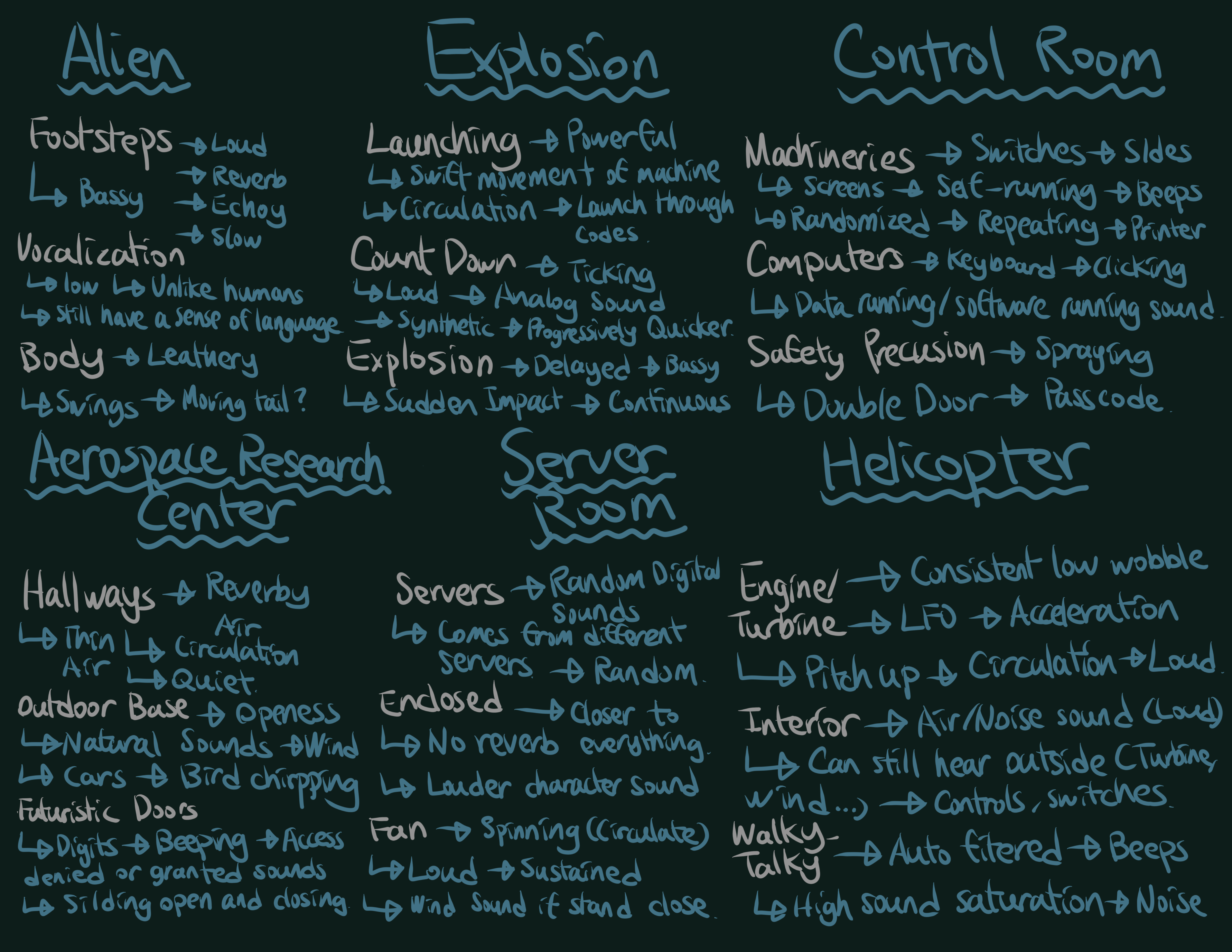The Track
The Story
Images & Diagrams
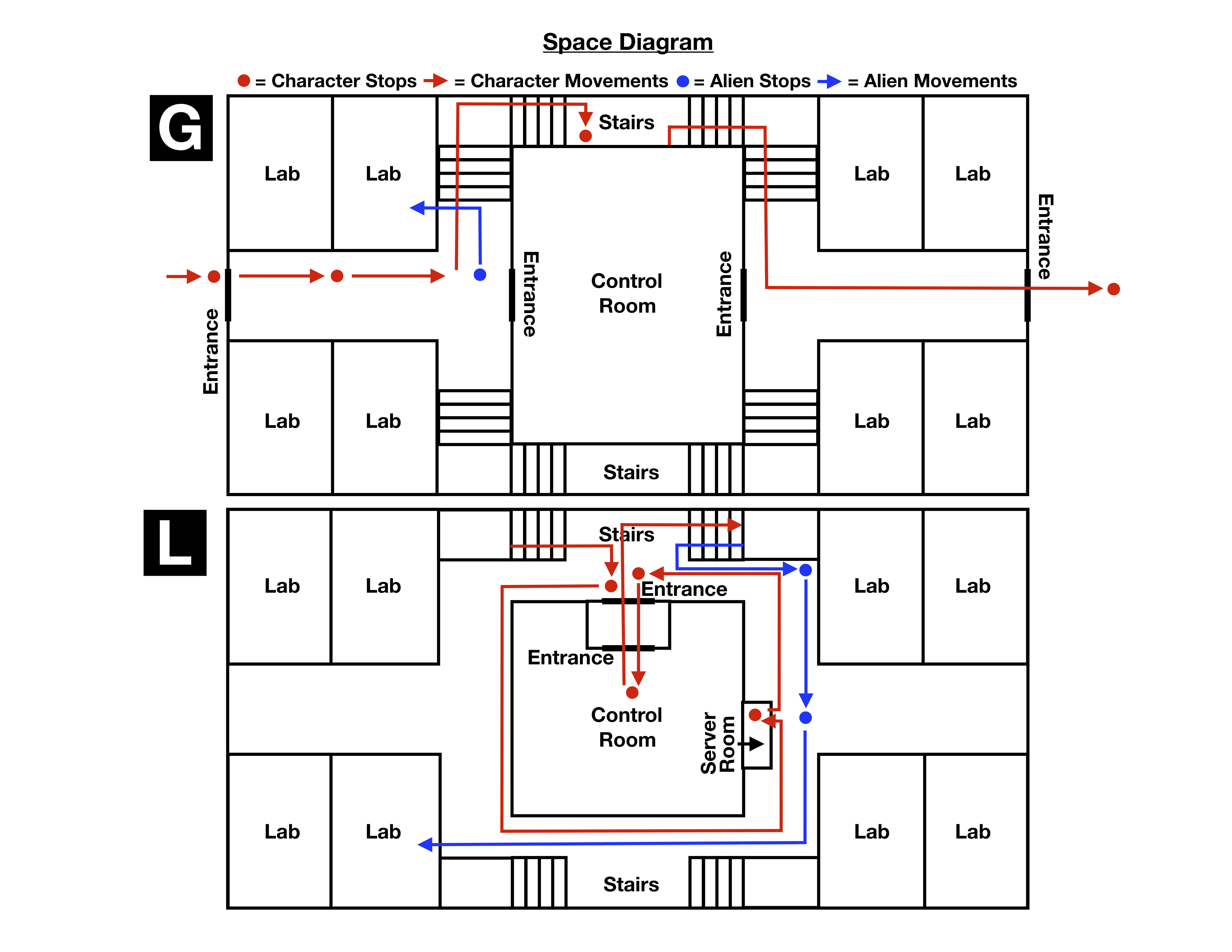
Word Associations and Related Sounds
Reflection Questions
What was the goal of the project and what did you do in your edit to create a sense of space?
My objective for this project is simply to bring listeners through a space as if they were the character that is experiencing a thrilling and dangerous mission set in the future. My strategy is quite similar to the previous project, except this time I have to cater the experience in a 3-dimensional space, which I would say is very different in terms of how to position sound and the logic behind that. In a 2 channel track, for example, when a character enters a space through a door and moves forward, the sound of the door closing simply needs to have a lower volume to indicate a distance from the door. However, in a 6 channel track, the sound of the door closing, instead of having a lower volume, needs to be positioned to the back of the room. Hence, one of the most important things I aimed to take away from this project is simply to understand this differentiation between the logic and method of sound positioning of the stereo and the 5.1.
In terms of creating a sense of space, there are a number of components that I have added to the project solely dedicated to this cause. Some examples include the waterdrop, server room, disinfection booth, bomb launching, and the electromagnetic sound coming from the light. The water drop comes into play in the very beginning of my surround track. It is positioned at the left-hand side of the character but as the character moves forward it slowly goes to the back of the character. Upon entering the facility, my character walks pass the hallway where the electromagnetic sound of the lights shifts pass my character as she moves forward. In the server room, the beeping sound is spaced randomly in different angles, which allows the listeners to understand that the character is surrounded by these machineries that are randomly generating signals. In the disinfection booth, the character is sprayed with disinfection gas once in the front and once in the back right before she enters the control room. In the control room when my character activates the machine, the circulation of this giant engine thrusting around the room indicates to the listener something big is about to happen. In short, I wanted to create a sense of a three-dimensional space by focusing on these smaller components which I find to be powerful if used right.
How did the story change over time?
My original story was about a white-color activity that takes place in Central Park. Hence, needless to say, my story changed a lot. Nonetheless, during the process of catering my futuristic thriller story, I also had decided to remove some elements because I thought they are not necessarily the most helpful when it comes to catering a three-dimensional space. An example that I can think of is how I wanted to include an actual combat scene between the researcher and the alien. In terms of enriching the storyline, this is definitely a plus. However, sonically, I can only imagine nothing but loud gunshots and alien noises. Additionally, as I mentioned before in the previous paragraph, many components only came after I take spacial positioning into serious consideration, which are components that I later find to be far more satisfactory to listen to then the ones I chose not to use.
What did you learn while you were creating the sound work?
One of the biggest lessons I’ve learned from working on this project is how much time and energy producing a track really takes. From my personal experience, one minute of a track, if edited carefully, can take up to three hours if not more. This is because there are simply too many components. From coming up with a story, to recording, to editing the recordings, to revising the story, to positioning and cutting, and when all are finally completed it is only one draft of the final product. Jumping from a two-channel track to a six-channel track is not a case of addition but multiplication in terms of the workload. Therefore, if this project teaches me anything, it is to respect the sound designers, producers, and sound engineers that are handling this amount of work on a daily basis.
What did you discover technically? What did you learn about producing an illusion of space?
There is a multitude of things I’ve learned from working with Adobe Audition, such as pitch bend, filter, amp, saturation, reverberation, compression, and so forth. However, I think the discoveries that I found the most interesting took place outside of Adobe Audition. An example would be the Zoom Recorder and the manipulation of sound. After being introduced to the Zoom Recorder, I realized that I can essentially create all kinds of sounds using the tools that can be found in Audition, which only became impactful to me until after I actually do it myself.
Another discovery I came during the process of creating sounds for this project is creating sound using the analog function of Ableton Live. Since a lot of sounds needed to create my story are future-oriented and digital, I could not find them in the recordings of my peers. Therefore, I had to learn to essentially make sounds by myself. There are many sounds that I’ve created from scratch solely using the analog function. Some examples would be the sound effects of the doors, the helicopter, the control room sound effect, and etcetera. Of which, the helicopter sound was especially difficult because it was compiled of five different analog sounds layered together and chained to a compressor to create that spinning effect. In short, I discovered that many sounds can be generated even without using any recordings whatsoever.
What aspects were challenging?
There are two aspects of this project I found to be very challenging. The first one, as I mentioned before in the second paragraph, is the transition of the editing process from a two-channel to six-channel track, because the logic and method are different. There are times when I edited sounds in a certain way for hours then realized only much later that it does not make sense spatially, which I wonder if I was the only person who has experienced this. The second aspect which I found challenging was to actually create sounds myself. These seemingly straightforward sounds such as the door opening and closing, bomb launching, and helicopter engine may appear to be very easy to recreate using the analog tool, however, that is far from the truth for someone who never studied sound engineering.
How might this exploration of sonic space help me in my future work as an artist/designer?
Since I believe I’ve only scratched the surface of this field, I do not want to say that I, as a designer, will be able to create sound installations from this point on. Nonetheless, I can definitely imagine how I can be more aware and efficient in the future when an element of my design deals with the spatial positioning, recording, and editing of sounds. More importantly, I think this experience will help me become a more sophisticated listener of other sound artists work and enrich my experience as a designer as a whole by allowing me to develop this pallet of sound that wasn’t there before.
